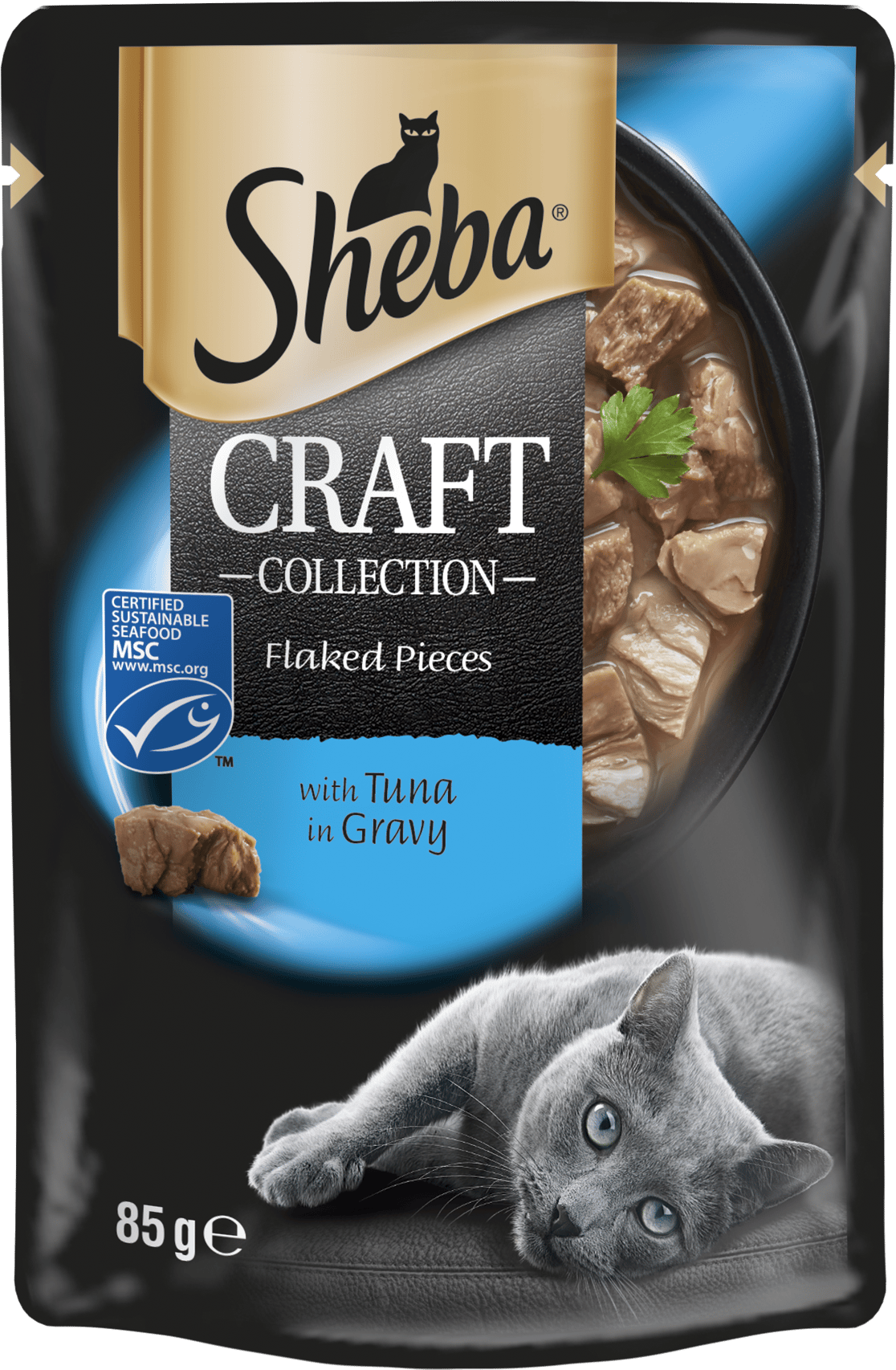
CIRCULARITY IN PACKAGING
Striving for Circularity in Packaging
Allison Lin, global VP of Packaging Sustainability at Mars, sits down with Flexible Packaging to discuss how executive leadership is vital to creating a circular economy throughout the packaging industry.
By Grant Gerke
In 2022, the circular economy is the de facto buzzword in the food and beverage world and, quite frankly, the industry is undergoing massive change in all areas: consumer behavior and expectations, smart manufacturing investments, and sustainability partnerships. Many consumer packaged goods (CPG) companies have recognized these huge hurdles and are searching for change agents to lead their companies through this once in a lifetime transition.
At Mars, Allison Lin was hired as global VP of Packaging Sustainability in 2021, and this could signal bigger things to come in reducing and rethinking packaging design as well as navigating recycling technologies going forward — a big undertaking.
The following is our interview with Lin. It has been slightly edited for space considerations.

Flexible Packaging: Can you talk a little about your background? Where did you grow up and were your parents in the business world? What about mentorships and how did you end up working for Mars?
Allison Lin: I spent my first four years in Taiwan, where the majority of my family still resides. My parents took all of their savings and immigrated to Alabama to give my sister and me better opportunities in the U.S. My dad was an engineer, and my mom ran and worked in a beauty salon before going back to school for a computer programming degree. My parents ingrained in me the principles of resilience and perseverance that still define me today.
I went to Carnegie Mellon to study business and computer science. While I was in college, I had an internship on Wall St. at Merrill Lynch — where I realized that was not the right world for me. Luckily, Procter & Gamble (P&G) was recruiting on campus, and I entered the world of packaging, which I knew nothing about at the time. At P&G I had the opportunity to lead their global recycled and biobased plastics sourcing strategy, and I fell in love with the field of packaging sustainability.
I eventually went to Starbucks and experienced the fiber side of the packaging business before moving to Coca-Cola, where I led the World Without Waste sourcing strategy for Closures, Labels, and Films. Most recently, I’ve spent two years on the converter side of the business for a different perspective on leading corporate sustainability at Westfall-Technik before coming back to the brand owner side at Mars.
Throughout my career, I had very robust and formal sponsorship and mentorship programs, as well as specific development programs for Asian Americans and women. I’m extremely thankful for the early exposure to those development programs as they helped me better understand and be better prepared for both the conscious and unconscious biases that I would face in the corporate world. I was attracted to Mars both in terms of their commitment to packaging sustainability, as well as their commitment to diversity and equity in the workplace.
ADVERTISEMENT
Flexible Packaging: We’ve been documenting collaboration amongst packaging suppliers, CPGs, brands and converters around sustainability for the last two years. So what are the challenges in 2022 with these partnerships, topics, and how is Mars goals being met here?
Lin: The majority of Mars’ packaging needs is to meet food safety requirements, and most of our packaging is in flexible formats. This makes it extremely challenging for us to utilize food-safe recycled content based on both legislation and availability.
While the industry has done a great job to collaborate across the supply network to deliver solutions, we still face issues with legislation globally around the inclusion of mechanically recycled PCR for food applications. This is why we form partnerships around both technical solutions as well as advocacy efforts to influence legislation around EPR and recycled content so that we can get and use the PCR needed for our applications.
The scale and magnitude of the transition requires action from companies, policy makers, experts, academics and societal organizations. Most recently, Mars, alongside Mondelez, Nestle, PepsiCo and Unilever, united under the banner of “Flexible Packaging Initiative” to create a circular economy for flexible packaging in Europe. The Initiative wishes to step up the collaboration across the packaging value chain, with EPR-schemes and with EU and local governments, to support the implementation of these changes rapidly.
With this initiative, Mars and participating companies are reviewing packaging designs with the aim to reduce, improve recyclability and increase the use of recycled and renewable content. To ensure packaging materials are kept within the economy, we aim to improve recycling infrastructure and uptake of recycled materials. We are also committed to support policies designed to improve consumer awareness of collecting, sorting and recycling packaging materials, through on-pack, in-store and online information.

Mars, Inc.’s retort-packaged Sheba line of cat food offers a three-layer film structure consisting of polypropylene (PP), polyethylene terephthalate (PET) and aluminum foil.
Feature photos courtesy of Mars, Inc.
Flexible Packaging: One emerging trend in plastic circularity circles and stated by Mars is the idea of redesigning packaging to meet sustainability goals. Other goals mentioned by Mars include reducing packaging and investing in closed loop technologies, such as advanced recycling. Is there one of these that’s emerging within Mars? Combination? And which one are you most excited about when it comes to 2025 goals?
Lin: The three main pillars of our packaging sustainability strategy are to reduce and remove unnecessary packaging (including reusable packaging), to redesign for circularity, and to invest to close the loop (including recycled content). All three need to happen for our goals to be met.
Our priority is first and foremost to reduce the packaging we don’t need; we’ll redesign as much of our remaining packaging as we can to be reusable. Whatever we can’t eliminate or make reusable we’ll then redesign to be recyclable or compostable.
We’re excited about our reusable packaging pilots, such as the Bulk Refill Zones with ASDA and our Pet Nutrition team in the UK, and the M&M’s bulk dispensing collaboration with Carrefour in France. These will help us understand consumer behavior better around reusable packaging, and which products in our portfolio will be better suited for reusable models to determine how we scale across our portfolio.
While we’re eliminating unnecessary packaging wherever possible, developing reuse models, and redesigning our formats for circularity, the majority of our remaining packaging — largely food contact flexible packaging — cannot currently be processed by mechanical recycling at scale. That’s why we’re also investing heavily in and advocating for advanced recycling technology and signaling our intent to buy more in order to drive new investments into these technologies. Of course, we believe this should be a complement and not an alternative to mechanical recycling.
There’s much to be done, however we’re committed to supporting the circular economy through investments and innovation, and working toward a world where packaging material never becomes waste.
"Our priority is first and foremost to reduce the packaging we don’t need; we’ll redesign as much of our remaining packaging as we can to be reusable. Whatever we can’t eliminate or make reusable we’ll then redesign to be recyclable or compostable."
Flexible Packaging: I’ve heard many packaging professionals cite “diversity of thought” in making a huge impact in the packaging segment over the last couple of years. Many analysts agree this is needed to transition to circularity. Can you talk about what you’ve seen in your tenure at Mars?
Lin: I’m fortunate to lead the packaging sustainability efforts at Mars, Incorporated — the global business known for brands such as M&M’s, Pedigree and Ben’s Original — where my vision aligns with its mission and beliefs. With my experience as an Asian American woman in the packaging industry, I’m proud to bring my diverse background and perspective to drive the progressive changes at Mars.
Eliminating packaging waste today is a massive challenge. The current system for collecting, sorting and recycling can’t yet manage the many different forms of waste that exists. While mechanical recycling systems are in place for some rigid plastic materials such as bottles, the recycling systems that can process our food-grade flexible packaging are severely underdeveloped and underfunded — getting them up and running will take years. And infrastructure differs from country to country, and even from state to state, making it challenging for flexible packaging to be recycled at scale.
We have a very diverse team from all over the globe working on packaging sustainability, and waste management infrastructure and solutions can vary dramatically across the world. We need to understand these differences to better design our packaging for circularity given the local infrastructure in different markets.
Mars has significant programs in place to diversify packaging solutions, to not only redesign but also to create reuse models, partnerships and active advocacy for policies as well as investments we need in place to succeed for everyone. For instance, Mars is investing hundreds of millions of dollars to redesign more than 12,000 packaging components across our diverse portfolio to fit with the recycling infrastructure that either exists today or is likely to exist in the near future in the markets where we operate, making it easier for consumers to reuse or recycle our packaging. Today, almost half of our packaging portfolio is undergoing redesign or elimination.
Video by realstockvector / iStock via Getty Images Plus and Onidji / Creatas Video+ via Getty Images Plus
July 2022 // flexpackmag.com
